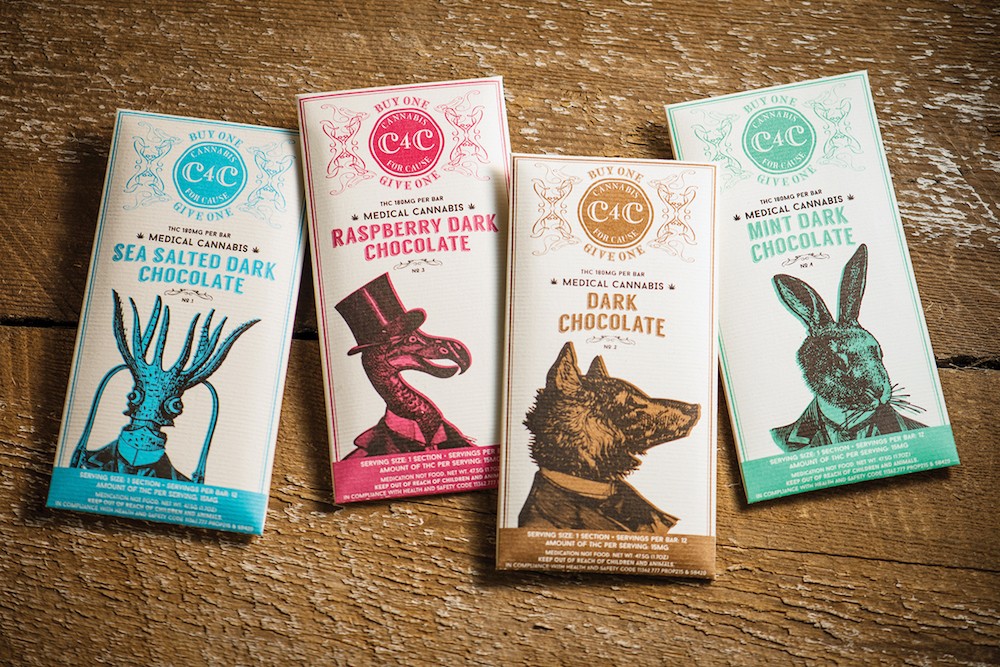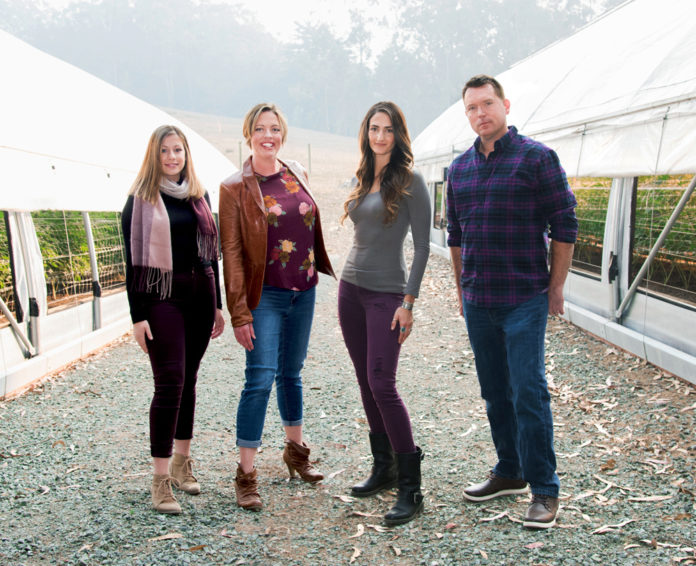Many cannabis entrepreneurs take pride in bucking traditions of the mainstream business world. Sometimes, though, it’s better to tweak a norm than outright defy it. It’s in the space between rebel and remodeler that Purple Line Media works, leveraging proven strategies as well as employing nonconforming new ones to gain maximum exposure for cannabis companies.
Elizabeth Kost and Jason Foraker founded Purple Line in 2014. Kost, who serves as the company’s chief executive officer, formerly worked as a production artist and packaging specialist in the alcohol industry. Foraker is an award-wining consumer packaging designer who has worked with sporting goods, electronics, and fashion companies.
With successful careers already in place, Kost and Foraker did not need to transition into cannabis, but they were attracted to a new and exciting space that was ripe with opportunity. “Jason and I were in a dispensary back in 2014 and thought, ‘Wow, these guys could really use some help with their packaging,’” Kost said. Now, “We get to brand the eventual Coca-Colas of cannabis.”
The wide-open space possessed another draw: Tight regulations prohibited many of the creative marketing and packaging solutions employed in other industries. Where other agencies might have seen a challenge, Kost and Foraker saw an advantage. “You have to know the compliance piece really well [to work in the alcohol industry], which helps to keep most of our [cannabis] competition at bay,” Kost said.
That’s not to say cannabis campaigns are easy to design and execute. For example, mainstream marketers often rely on Facebook and Google to spread their messages, but those avenues are off-limits for cannabis. In that kind of environment, product packaging takes on an outsize role, serving not only as a protective container but also as an advertising-and-marketing medium, educational resource, and conversation starter. “In cannabis, consumers will experience your package before they even experience the product,” Kost said. “If the packaging looks cheap or the branding is ineffective, it influences the way consumers feel about your product.”
While development costs from conception to dispensary shelves can be quite high, Kost advises cannabis entrepreneurs to avoid skimping on packaging costs. After four years in the industry, she still is surprised that producers spend an enormous amount on permits, seeds, and lighting equipment but hesitate to budget appropriately for packaging. “You should be just as precious with your packaging design time and spend as you are with producing the actual product,” she said. “These two pieces go hand in hand.”
She also believes cannabis companies that throw all their packaging and marketing dollars in one direction—at digital designers, for example, who may be great at creating websites but lack experience in the limitations imposed by physical materials—are making a mistake. “That’s like hiring a painter to fix your roof,” Kost said.
Another mistake is born of cannabis’s status as a fledgling industry populated primarily by startups: Product creation and perfection takes precedence over everything else. But, Kost pointed out, what good is having the world’s best product if no one knows it exists? That’s why she spends considerable time educating potential clients about the importance of branding. “They’ve never done this sort of thing before,” she said, noting that some companies turn to low-cost, online creative platforms like 99designs and Upwork for help because they simply don’t realize strategic, professional design by cannabis specialists is available and affordable.
According to Kost, one of the biggest mistakes cannabis companies make is looking at branding, marketing, and packaging as separate efforts. In fact, she said, “your brand story, design, communication materials, packaging look, and product offering should all center around the strategy you employ to reach a target consumer.”

The time and energy Kost expends educating clients pays off when what they created together takes off. While choosing a favorite project would be much like choosing a favorite child, Kost said one effort stands out: Cannabis for Cause’s Alice in Wonderland theme. “We did this really great apothecary look that incorporated anthropomorphism,” Kost said. She also said the project likely will be the last whimsical design Purple Line will create, because packaging regulations in most legal states now prohibit anything that might appeal to children in any way.
Other clients have benefited from Purple Line’s playful approach to design: Aces’ disposable vape pens are packaged in boxes that look like decks of cards, and Weird Science’s shatter disks are presented in packages that resemble the computer mainstays of yesteryear, floppy discs. Whimsy works in design, Kost said, partially because it engenders a sense of nostalgia.
Of all the reasons to integrate product production, branding, marketing, and packaging, Kost cites one as far and away the most convincing: When a strategy is unified and executed by professionals, the bottom line benefits.
“One of our very first clients was Big Pete’s Treats,” she said. “I had seen his packaging in dispensaries, and it was basically a clear bag with a sticker that had a cartoon of Pete.” Purple Line’s brand redesign accomplished much more than giving Big Pete’s Treats an up-to-date, hipper vibe. Soon after the new design launched, Big Pete’s Treats saw a 60-percent jump in monthly sales.
Humboldt Alchemy Group experienced a similar boost after receiving “the Purple Line treatment”: Within thirty days of a new product’s launch, the company recouped its dry goods cost, according to Kost. For startups, that kind of capital recovery is both astounding and invaluable.
Because she’s the “practice what you preach” type, Kost is using all the advice she gives her clients in her own first foray into the cannabis products realm: a terpene-infused fragrance called Fog & Tree. “This is the first all-natural fragrance on the market that is infused with real cannabis terpenes,” she said. Fog & Tree is meant to transport the senses to the Redwoods of Northern California. The packaging, marketing, and branding efforts all rely on an elegant, minimalist aesthetic, in part because the target market is upscale consumers, but also because “our fragrance contains zero THC, and the [Food and Drug Administration] recognizes cannabis terpenes as safe for humans,” Kost said. “So, our fragrance is federally legal” and will be marketed in all fifty U.S. states.
The Rule of 5s
At the core of Purple Line Media’s philosophy about product packaging lies a tried-and-true retail concept called “the rule of fives.”
Shoppers should know what the product is in five seconds.
Shoppers should be able to identify the product from five feet away.
Product packaging should bear no more than five lines of communication.








